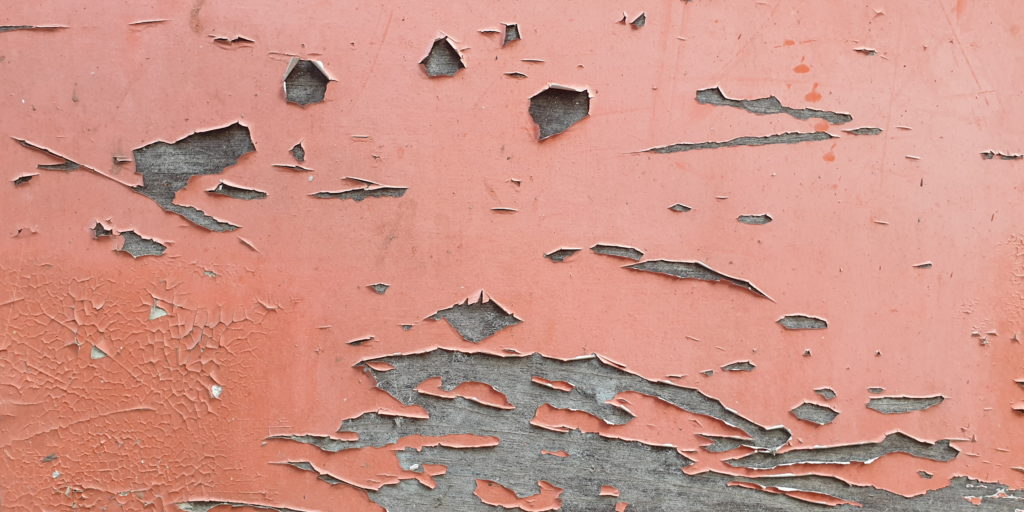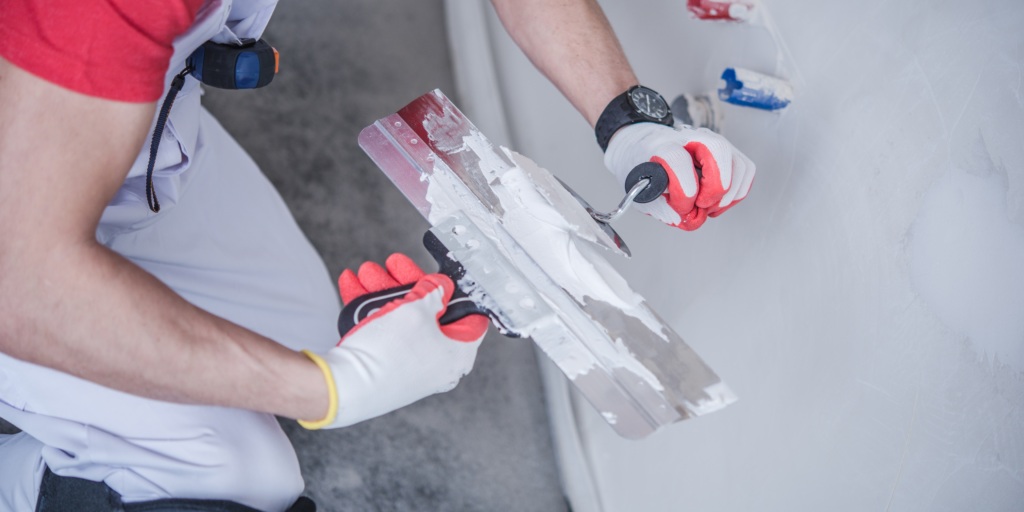The best technique for fixing wall paint chips is included in the list of techniques. Applying a tiny amount of spackling compound with a putty knife while smoothing it is a great idea to patch the area after cleaning the surrounding chip. Another method is the application of a specific paint that is a good match with the damaged area using a touch-up paint pen or brush. For bigger chips, you can use a repair kit composed of sanding the chipped area, applying the patching compound, and finally, painting over the fix. The other option is a peel-and-stick patch; its fix is a simple and quick solution for small gaps. Furthermore, you can feather and blend the repaired area with the rest of the wall by applying a spray texture.
How do you prevent peeling off paint from walls, and what are the most common reasons for peeling off paint?
Here are a few possible causes for paint chips on walls, such as furniture scratches, water damage, and an inadequate painting job. Comfort pads, proper ventilation, the correct paint thickness, and sticking power will sort things out. Preventative maintenance, where signs of wear and tear are looked for, can do this. In addition to that is the function of the paint quality and how it is applied. This way, homeowners won’t have to chip the paint anymore and will not need to repaint the walls.

How do you fix paint chips on walls? What are the necessary tools and materials?
There are several essential things to buy for fixing chipping paint on walls. Before filling and flattening the damaged area, get the spackling compound and a putty knife. The putty knife is good to use with a few chips. If color accuracy is your primary concern, you should have a touch-up paintbrush or pen. To make the surface smooth again and thus be able to paint the chips, you’ll need a patching kit with sandpaper, a patching compound, and instructions. What is more, the furniture pads are like an insurance policy for the future in terms of preventing such damage. Lastly, a texturized spray can be applied to achieve an effect that will blend the repaired area with the rest of the wall.
How will the joint compound or spackle be used to fill in tiny paint chips on walls?
It is an exacting task to fill with spackle or joint compound minuscule paint chips on walls. Before applying the spackling compound, ensure the area around the chip is cleaned. Next, with a putty knife, spread a coat of compound over the chipped region, ensuring that the surface is leveled and even. Use your paintbrush to blend in where you should, and the paint will blend into the wall nicely. After the packing compound has been dry, you need to smooth any uneven areas by lightly sanding the area. After the surface becomes smooth, you should fill the repaired chip with paint so that it does not stand out from the color of the surrounding wall. For best results, please always follow the instructions from the manufacturer when using spackle or joint compound.
How do you patch over larger paint chips on walls with the help of a patching kit?
A more realistic route towards getting a perfect repair is to use a kit to patch up the more considerable paint flaws on walls. The process begins by collecting the needed components, like sandpaper and patching compound, and by evaluating the extent of the damage. The chipped area should be cleaned to get good bonding with the patching material. Use a putty knife to distribute the compound evenly and flatten it out; then, let it dry completely. Once the wood dries, even out the texture by sanding it evenly. Then, proceed with painting. If you do them as instructed, you can make the wall beautiful again and stop further damage.

How can a paint touch-up pen repair chipped paint on the walls?
The main idea behind using a paint touch-up pen is accuracy and detail, so be careful. To get a smooth finish for applying the spot paint, gently clean the damaged area first. To avoid uneven mixes, shake the touch-up pen vigorously. Once you’ve done that, fill in the crevices with soft, short strokes. Be sure to blend the repaired area into the surrounding wall by matching the color and texture of the patched area to the paint and wall texture of the other walls. Let the paint dry completely before determining the coverage and doing any touch-ups. Observing these rules will give you an obvious idea of what you need to do to get your walls back to where they were.

